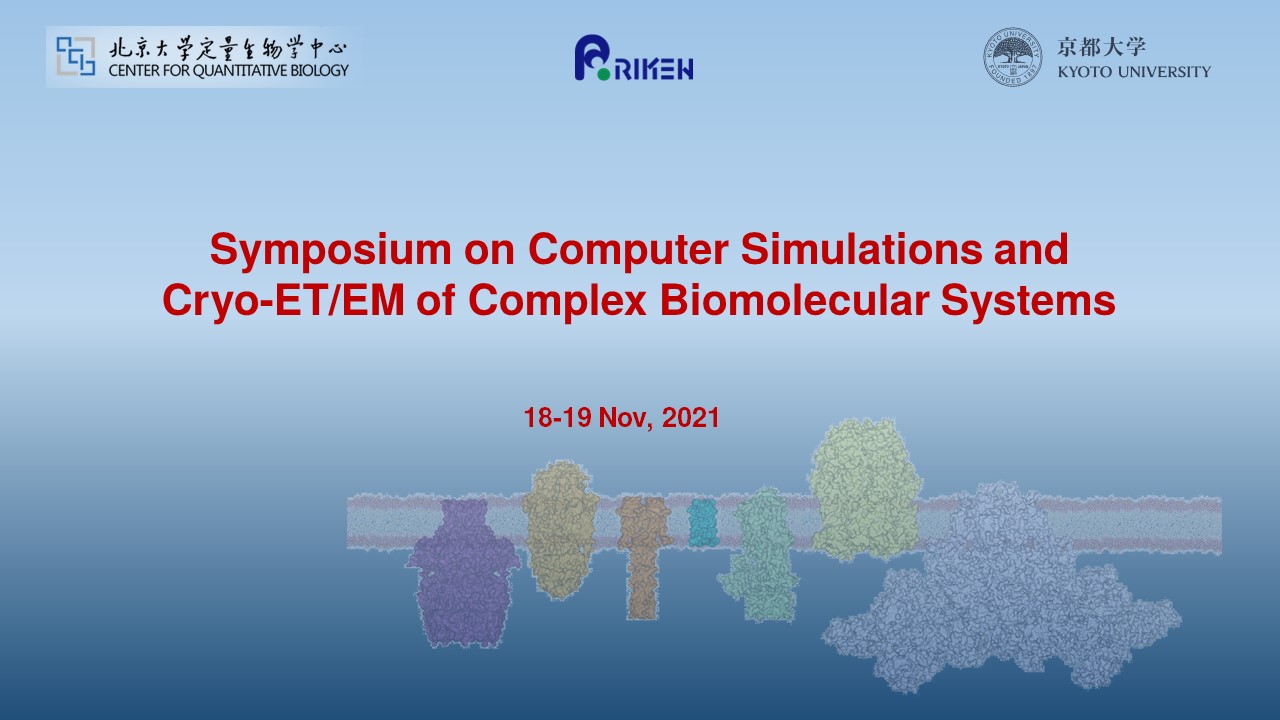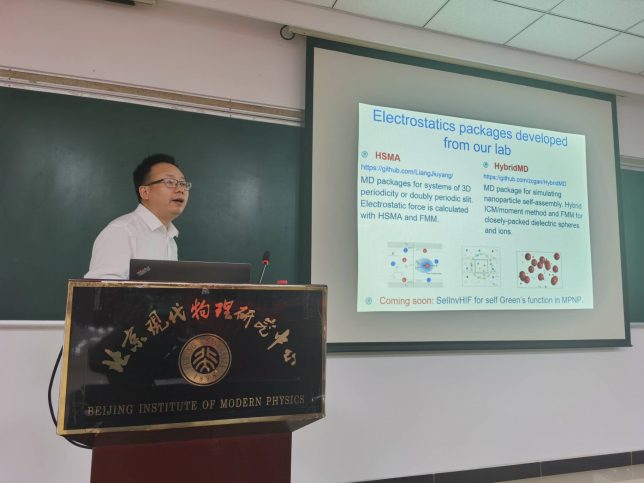Dr. Chen SONG was invited to give a talk at the Xiamen Soft Matter Forum & ICAM-China Autumn Workshop, 10 Dec 2021, where he presented our work “On the gating mechanisms of mechanosensitive ion channels”.
MOST-RIKEN meeting
Together with Dr. Yuji Sugita (RIKEN) and Prof. Shoji Takada (Kyoto University), we organized an international meeting: Symposium on Computer Simulations and Cryo-ET/EM of Complex Biomolecular Systems, 18-19 Nov 2021. We received over 400 registrations from 32 countries, and there were nearly 200 people connected online in the virtual meeting. We discussed computer simulations and Cryo-ET/EM for membrane protein systems, as well as advances in enhanced sampling and accelerated MD methods. It was a wonderful event, supported by our MOST-RIKEN international collaboration grant.

Orai paper online
Our computational study on the Ca2+ channel Orai is now published online in Frontiers in Molecular Biosciences: https://doi.org/10.3389/fmolb.2021.755247. In this work, Xiaoqian and Hua examined the impact of a particular mutation, L138F/L210F, on the structure of the Orai channel. Many thanks to Xiaoqian and Hua, who left the group but managed to finish the project!
SongLab server online
We have set up a computational server for public usage: http://www.songlab.cn/
At the moment, the server can provide predictions of membrane contact probability for a given protein sequence (26 < length < 700).
The source codes and models developed in our group can be found at GitHub: https://github.com/computbiophys
Congrats to Song
Congratulations to Song YANG, who has passed his qualifying exam! Song is working on a mechanosensitive ion channel and has found something surprising …
Dr. Zhenli XU visited us
Invited by Dr. Chen SONG, Dr. Zhenli XU from Shanghai Jiao Tong University visited us and presented his exciting work on the random batch Ewald method and improved Poisson-Nernst-Planck (PNP) method for computational studies of charged systems. We had fruitful discussions, and we look forward to extensive collaborations with Dr. XU’s group!

Yanyan and Yang left
Yanyan and Yang have finished their postdoc training in the group and moved on to their new and more independent positions. Both of them have done well in the last several years. Yanyan was a semi-independent member of the group, supported by the Boya Fellowship, and she has learned extensive modeling and simulation techniques. Yang has also made progress in every aspect of his research. We wish them all the best in their future career development.
Yanyan’s Plexin paper online
Yanyan has been trying to understand the antithetic effect of homologous RND1 and RhoD GTPases in mammalian plexin regulation using MD simulations and proposed a putative structural model. This work is now published on eLife, which is a perfect ending of Yanyan’s postdoc training in the group, co-supervised by Drs Yibing SHAN and Chen SONG. This work was in collaboration with Dr. Xuewu ZHANG’s lab at UT Southwestern Medical Center. The paper can be found here.
Yang’s NompC paper online
In collaboration with Prof. Zhiqiang YAN’s lab, we studied the gating mechanism of the tethered mechanosensitive ion channel NompC by using MD simulations and electrophysiology experiments. We revealed the molecular details of an interesting “push-to-open” gating mechanism for this unique channel, which may enable cells to sense compression or shrinkage. Congratulations to Yang and many thanks to everyone who participated in the project. The paper is now online at: https://elifesciences.org/articles/58388
Seminar from Prof. Shi-Jie CHEN
Chen SONG and Chun TANG invited Prof. Shi-Jie CHEN from the University of Missouri to talk about his work on the prediction of RNA structures and small molecule-RNA interactions in the CQB Seminar on May 17. It was a popular seminar, with more than 90 people attended the online Zoom Meeting and many interesting questions discussed.
